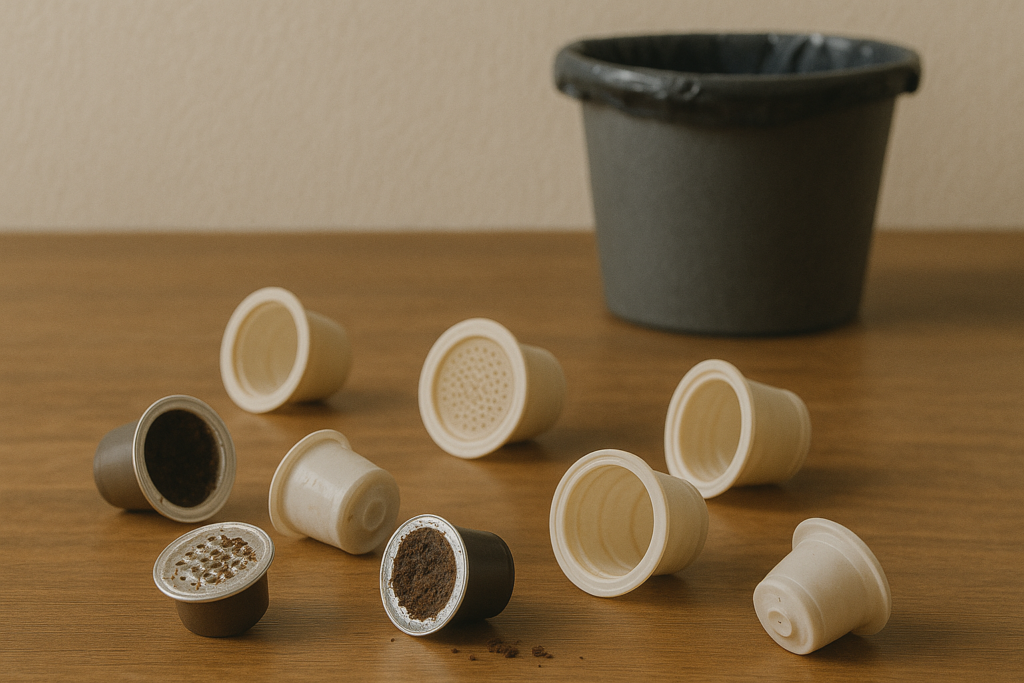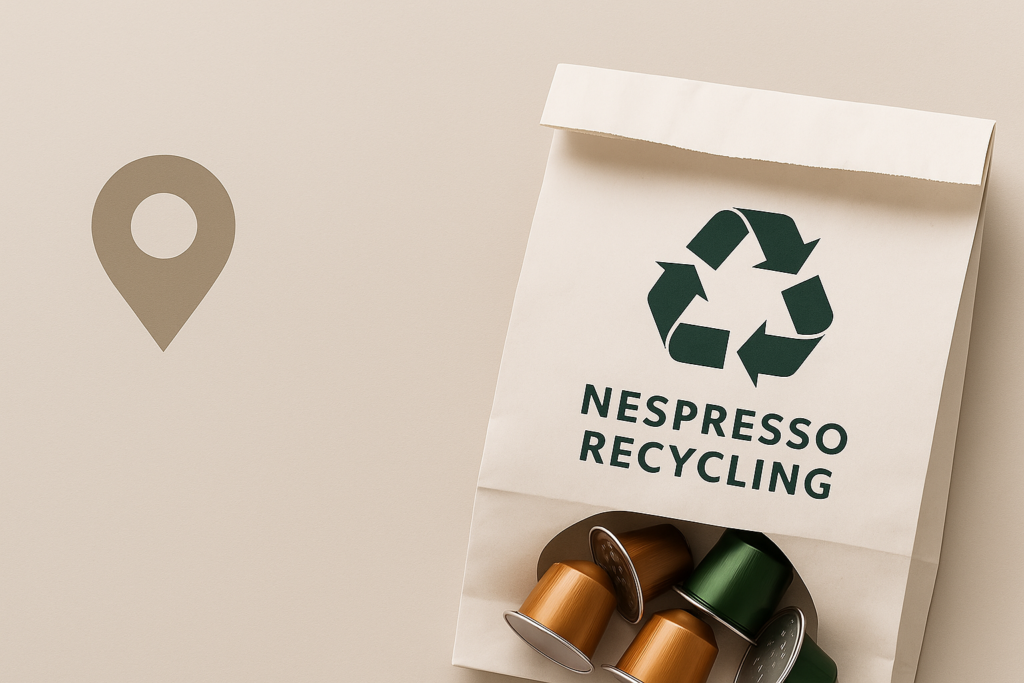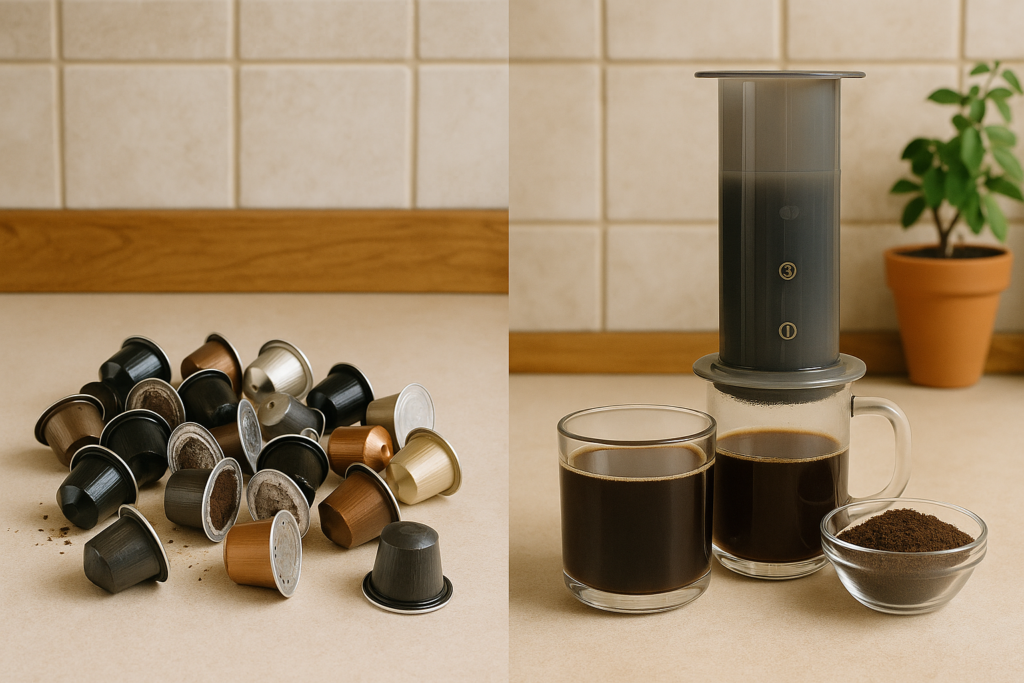Are Coffee Pods Killing the Planet? What You Need to Know About Nespresso Recycling
Why People Are Worried About Coffee Pods
Coffee pods have completely changed the way many of us brew coffee. They’re quick, clean, consistent—and honestly, pretty convenient. But that convenience comes with a question mark. In a world where we’re becoming more aware of waste, packaging, and environmental impact, the humble coffee pod has found itself at the center of a growing debate.
Are these small, single-serve capsules just another layer of unnecessary waste? Or are they being unfairly blamed for bigger sustainability issues in the coffee industry?
Critics often point to the materials: aluminum, plastic, and often a mix of both—tricky to separate, harder to recycle. Millions of capsules are used every day, and when even a fraction of them end up in landfills, it adds up fast. On the surface, that sounds bad. But the full picture is more complicated.
What Happens to Coffee Pods After Use?
Once you’ve brewed your espresso and tossed the pod in the trash—or maybe the recycling bin—what actually happens to it?
The short answer: it depends. While many coffee pods are technically recyclable, that doesn’t always mean they are recycled. Most standard pods are made from a mix of plastic and aluminum, with a layer of coffee grounds sealed inside. That combination makes them tricky to process in regular municipal recycling systems, where machines often can’t separate mixed materials or clean out leftover coffee residue.
Even when pods are labeled “recyclable,” they often require special handling. In many places, local recycling services don’t accept them at all—especially if they contain mixed materials or leftover coffee grounds. Others might, but only if they’ve been cleaned and separated first—which most people understandably don’t do at 7 a.m.

This mismatch between “recyclable” and “actually recycled” is one of the biggest challenges. It means that, in many cases, used coffee pods end up in landfills or incinerators, even if they were technically designed with sustainability in mind.
And it’s not just about the pod itself. The production, transportation, and disposal of single-use packaging all add up in terms of environmental cost. So while a single capsule may not seem like much, the sheer volume used worldwide—billions every year—makes this a conversation worth having.
But it’s not all bad news. Some brands have stepped up with dedicated recycling systems, aiming to make capsule use more responsible. One of the most visible examples? Nespresso.
How Nespresso’s Recycling Program Works—and What That Means for You
To their credit, Nespresso has put significant effort into addressing the capsule waste problem. Their recycling program is one of the most developed in the coffee industry, and it’s been promoted as a key part of their sustainability strategy. But how does it actually work—and how easy is it for everyday coffee drinkers to participate?
The system is built around a closed-loop model. Nespresso capsules are made primarily from aluminum, which is highly recyclable if handled correctly. Used capsules can be returned through dedicated collection points, Nespresso boutiques, partner drop-off locations, or even mailed back using prepaid recycling bags (available in some countries). Once collected, the aluminum is separated from the used coffee grounds. The metal gets melted down and reused, while the grounds are often turned into compost or biofuel.

It sounds promising—and in theory, it is. But here’s the reality: even though Nespresso has invested heavily in building a global recycling network, participation remains limited. According to Nespresso’s own reporting, about 32% of capsules were recycled globally in 2022. Some independent estimates suggest the actual rate may be closer to 25% or even lower, depending on the country and how usage is tracked.
That gap between what’s available and what’s actually used highlights an important point: a recycling system is only as effective as the habits it supports. For eco-conscious coffee drinkers, the real takeaway isn’t that the program is flawed—it’s that convenience, awareness, and follow-through matter just as much as the infrastructure itself. Knowing how the system works is the first step. The next is deciding whether it fits into your lifestyle—or if it’s worth exploring alternatives that make sustainable choices a little easier.
Making Your Pod Habit More Sustainable
If you love the simplicity of pod coffee, you’re not alone—and you don’t have to give it up to be more eco-conscious. The goal isn’t perfection. It’s progress. And with a few small shifts, your daily brew can have a lighter footprint.
The first and most impactful step is to actually use the recycling systems that exist. If you’re a Nespresso drinker, find out whether you can request a recycling bag or drop your used pods off nearby. Once it becomes part of your routine, it’s surprisingly easy to stick with. You can also explore alternatives like compostable pods made from plant-based materials, which break down more easily in industrial composting systems. Just make sure your local waste services accept them—otherwise, they’ll end up in landfill like anything else.
Another great option? Reusable stainless-steel or refillable capsules that let you enjoy your favorite ground coffee with almost zero waste. They take a bit more effort, but for many people, it becomes a satisfying ritual that combines convenience with sustainability. And if you’re looking to level up your coffee ritual entirely, you might even consider going back to basics. Manual brewing methods like French press, AeroPress, or pour-over produce no disposable waste at all—and give you total control over flavor and quality.

In the end, the most sustainable coffee routine is the one that aligns with both your values and your lifestyle. Pods aren’t inherently evil—but like anything in our daily habits, they come with trade-offs. Understanding those trade-offs gives you the power to make better choices—one cup at a time.
The Bigger Picture Behind Every Pod
Coffee pods aren’t the planet’s biggest problem—but they do represent a larger question we all face: how much are we willing to trade for convenience? While brands like Nespresso are making strides in recycling, the real impact comes from how we engage with those systems—and whether we’re open to small changes that make a difference.
In the end, sustainability isn’t about doing everything perfectly. It’s about staying aware, asking questions, and making choices that feel right for you. Your coffee habit doesn’t have to be wasteful. With a bit of intention, it can be part of a smarter, more sustainable routine—without giving up the comfort of a great cup.

